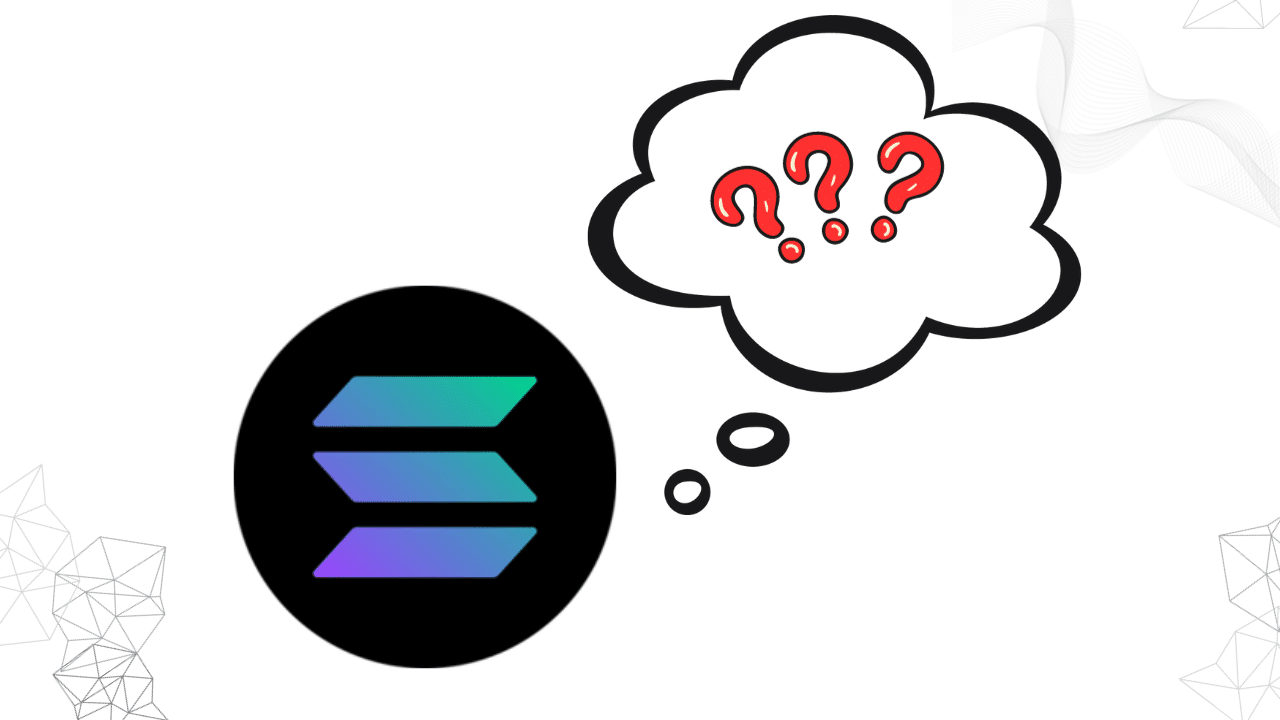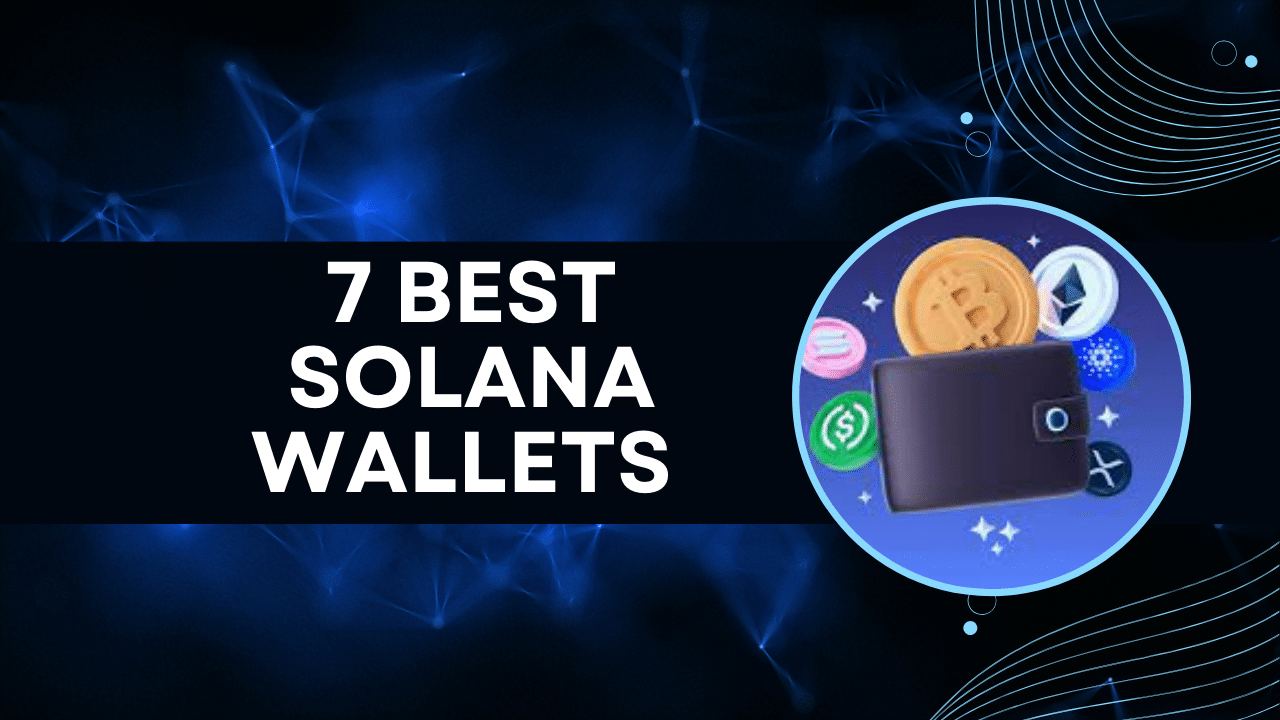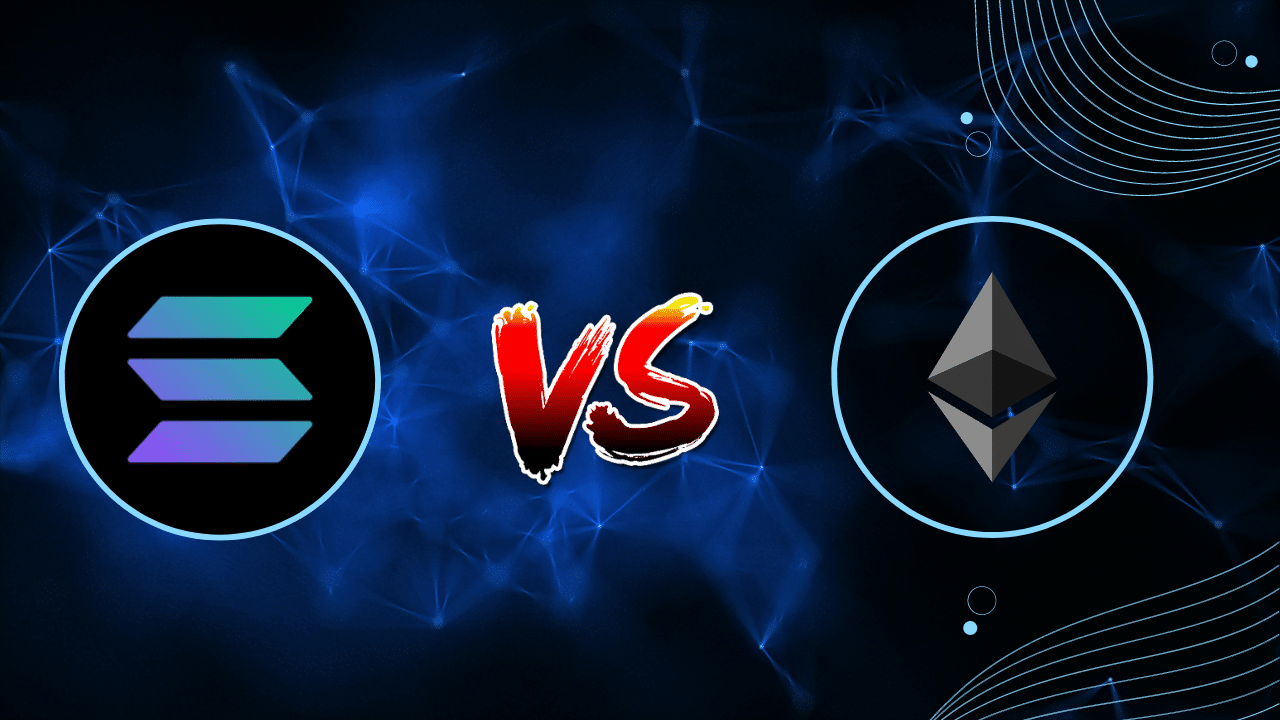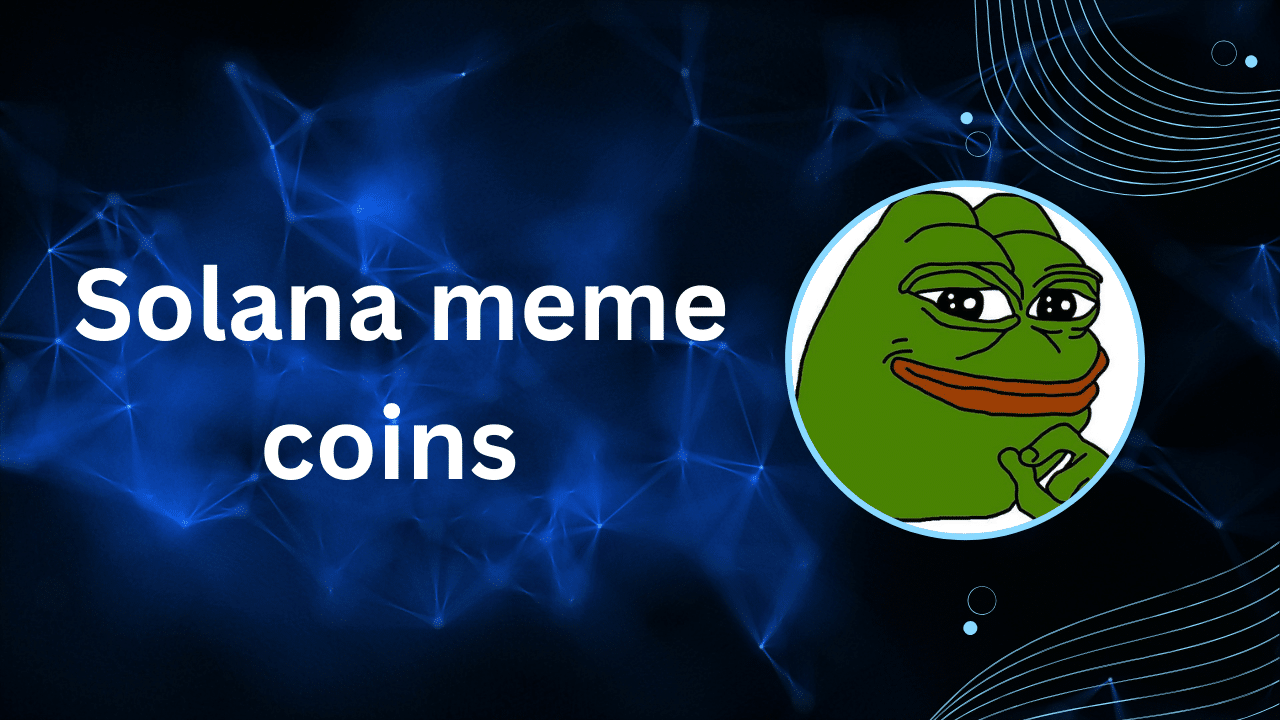Contents
|
|
Did you know that Solana, a high-performance blockchain platform in the crypto industry, processes over 65,000 transactions per second? Solana is often seen as an ethereum killer and is gaining popularity alongside bitcoin and cardano. That’s more than 10 times the bandwidth capacity of the crypto industry’s Ethereum and Bitcoin projects combined, on a standard gigabit network! Solana is revolutionizing the world of decentralized applications by providing lightning-fast solutions for developers and users in the crypto space. With its innovative approach, Solana is becoming a major player in the bitcoin and ethereum communities, offering scalable solutions that enhance the efficiency of projects and systems.
Using a unique combination of cutting-edge technologies, Solana uses ethereum and proof-of-stake (POS) to design a system that offers low transaction fees and high throughput, making it ideal for a wide range of projects. Ethereum uses an innovative consensus mechanism called Proof-of-History (PoH) to ensure secure and efficient data processing in the blockchain cluster. By leveraging the delegated proof of ethereum mechanism along with other advanced algorithms and protocols, Solana creates a robust network where participants can execute smart contracts seamlessly in the next block.
With its exceptional performance and design, Solana is poised to transform the way we interact with ethereum blockchain technology. Solana uses a cluster to achieve its outstanding speed and efficiency, making it a game-changing solution in the world of cryptocurrency.
Contents
How Does Solana Work? Exploring the Features
Solana is an impressive blockchain platform that sets itself apart from others in the market with its efficient and scalable network of Ethereum nodes. Ethereum boasts several unique features that contribute to its scalability, speed, and overall user experience. These features include the ability to process transactions through nodes and the efficient validation of the next block. Let’s delve into these features and understand how Solana, with its next block and nodes, works.
Ability to handle thousands of transactions per second
One of the standout features of Solana is its remarkable ability to handle thousands of transactions per second. While other blockchains like Ethereum struggle with scalability issues, Solana has found a way to overcome this hurdle. By utilizing an innovative architecture and advanced consensus mechanism, Solana can process a high volume of transactions simultaneously.
Leveraging Proof-of-History for enhanced scalability and speed
To achieve its impressive transaction processing capabilities, Solana leverages a mechanism known as Proof-of-History (PoH). PoH enables the network to establish an ordered sequence of events or “proofs” that occur over time. This allows validators on the network to quickly verify the order and authenticity of transactions without relying solely on computation-based mechanisms like Proof-of-Work (PoW) or Proof-of-Stake (PoS).
Support for smart contracts and decentralized applications (dApps)
Another key feature of Solana is its support for smart contracts, enabling developers to build decentralized applications (dApps) on the platform. Smart contracts are self-executing agreements that automatically execute predefined actions when certain conditions are met. With Solana’s smart contract functionality, developers have the freedom to create innovative dApps across various industries such as finance, gaming, supply chain management, and more.
Parallel transaction processing reducing congestion on the network
Solana’s architecture allows for parallel transaction processing, which significantly reduces congestion on the network. Unlike traditional blockchains where each transaction must be processed sequentially in blocks, Solana employs a unique approach called “pipelining.” This means that multiple transactions can be processed simultaneously, improving overall throughput and reducing transaction confirmation times.
Improved user experience compared to other blockchains
With its unique features and architecture, Solana offers an improved user experience compared to other blockchains. The ability to handle a high volume of transactions per second ensures that users can transact quickly and efficiently. The reduced congestion on the network leads to faster transaction confirmations and lower fees, making Solana an attractive choice for users seeking a seamless blockchain experience.
Understanding the Technology and Mechanisms Behind Solana
To truly comprehend how Solana works, it’s essential to delve into the technology and mechanisms that power this innovative blockchain platform. Solana combines various algorithms and consensus mechanisms to achieve its impressive transaction throughput and scalability.
Proof-of-History (PoH) and Proof-of-Stake (PoS)
Solana employs a unique consensus algorithm called Proof-of-History (PoH), which works in conjunction with Proof-of-Stake (PoS). PoH serves as a verifiable historical record that enhances efficiency and security on the network. It provides a chronological order of events, allowing validators to quickly validate transactions without needing to process every single one.
Tower BFT Consensus
In addition to PoH, Solana utilizes Tower Byzantine Fault Tolerance (BFT) consensus for finalizing blocks rapidly. This consensus mechanism enables validators to reach an agreement on the state of the blockchain by participating in a voting process. Validators play a crucial role in maintaining consensus by staking SOL tokens as collateral. By doing so, they have an economic incentive to act honestly and follow the rules of the network.
Fast Confirmation Times and High Reliability
By combining these technologies, Solana achieves incredibly fast confirmation times while maintaining high reliability. The use of PoH allows validators to skip unnecessary computations, enabling faster processing of transactions. Thanks to its scalable architecture, Solana can handle high transaction volumes without compromising speed or security.
Solana’s ability to process thousands of transactions per second sets it apart from many other blockchain platforms. With its high bandwidth capacity and efficient validation mechanisms, Solana has become well-suited for applications requiring rapid transaction processing times.
Validators: The Backbone of Consensus
Validators play a critical role in ensuring the integrity and security of the Solana network. These individuals or entities are responsible for validating transactions, creating new blocks, and finalizing the blockchain’s state. To become a validator, one must stake a certain number of SOL tokens as collateral.
Validators are incentivized to act honestly and follow the rules of the network. If they attempt to engage in malicious behavior or validate incorrect transactions, they risk losing their staked tokens. This economic incentive ensures that validators have a vested interest in maintaining consensus and securing the network.
Tokenomics and Staking
Solana’s native token is called SOL, which serves multiple purposes within the ecosystem. Aside from being used for transaction fees, SOL tokens can be staked by participants to support the network’s security and consensus mechanisms. Validators stake their SOL tokens as collateral, while token holders can also choose to delegate their tokens to trusted validators.
By staking or delegating SOL tokens, participants contribute to Solana’s overall security and receive rewards in return. These rewards serve as an additional incentive for individuals to actively participate in maintaining the network’s integrity.
How Solana Functions as a Cryptocurrency
Solana, like many other blockchain networks, has its native cryptocurrency called SOL. This digital currency plays a crucial role within the Solana ecosystem, enabling various functionalities and incentivizing network participation.
SOL: The Native Cryptocurrency of Solana
SOL serves as the primary medium of exchange within the Solana blockchain. Users can hold SOL tokens in their wallets, transfer them between different addresses, or use them for payments within decentralized applications (dApps). Similar to how we use traditional money for transactions, SOL facilitates financial activities on the Solana network.
Staking SOL for Network Security and Rewards
One unique feature of Solana is that users can stake their SOL tokens to help secure the network and earn rewards in return. When individuals stake their tokens, they essentially lock them up in a wallet to support the validation process of transactions on the blockchain. This staking mechanism not only enhances network security but also encourages active participation from token holders.
By staking SOL, participants contribute to maintaining the integrity and decentralization of the Solana network. In return for their contribution, they receive rewards in the form of additional SOL tokens. These rewards serve as an incentive for users to hold onto their tokens rather than selling them immediately.
Fixed Total Supply Ensuring Scarcity
The total supply of SOL tokens is fixed at 489 million. This means that there will never be more than 489 million SOL tokens in existence. The limited supply ensures scarcity over time, which can have implications on its value and demand. As with any asset that exhibits scarcity, if demand increases while supply remains constant or decreases, it can potentially drive up the price of SOL.
The fixed total supply also provides confidence to investors and users that there won’t be sudden inflationary events affecting their holdings. With a known maximum supply already established, individuals can make informed decisions about acquiring and holding SOL based on their understanding of the token’s potential value.
Incentivizing Network Participation and Ecosystem Growth
Solana’s native cryptocurrency, SOL, plays a crucial role in incentivizing network participation and driving ecosystem growth. By offering rewards for staking SOL tokens, individuals are encouraged to actively engage with the Solana blockchain. This engagement helps secure the network while simultaneously fostering its development and expansion.
The use of SOL as a medium of exchange within dApps also creates demand for the cryptocurrency. As more decentralized applications are built on the Solana platform, users will require SOL tokens to access and utilize these applications. This demand can contribute to the overall growth and adoption of Solana as a blockchain ecosystem.
The Proof of History Concept in Solana
Proof-of-History (PoH) is a unique concept introduced by Solana to order and timestamp transactions. This innovative mechanism plays a vital role in the efficiency, security, and decentralization of the Solana blockchain.
Efficient Verification with PoH
One of the key advantages of PoH is its ability to provide a historical record that enables efficient verification of the blockchain’s state. By incorporating timestamps into the consensus model, PoH allows validators to process transactions quickly without relying solely on computational power. This means that even with high transaction volumes, Solana can maintain fast throughput and low latency.
Preventing Transaction Manipulation
Another crucial aspect of PoH is its role in enhancing security by preventing malicious actors from manipulating transaction order. With traditional blockchains, achieving consensus on the chronological order of transactions can be challenging. However, thanks to PoH’s verifiable delay function and use of clocks, Solana ensures that all participants agree on the correct sequence of events.
By leveraging PoH’s history algorithm, Solana creates a reliable timeline for transactions. Validators can easily verify this historical record and confirm the validity and order of each transaction. This prevents any attempts at reordering or tampering with transactions after they have been added to the blockchain.
High Throughput and Low Latency
Solana’s implementation of PoH allows it to achieve remarkable levels of scalability without sacrificing decentralization. The combination of fast throughput and low latency makes it an ideal platform for applications requiring quick transaction processing times.
With other blockchains, increasing throughput often comes at the cost of centralization as validators need more computational power to keep up with demand. However, Solana’s use of PoH enables validators to process transactions efficiently without compromising on decentralization.
Consensus through Delegated Proof-of-Stake (DPoS)
To further enhance its consensus mechanism, Solana utilizes a variant of Delegated Proof-of-Stake (DPoS). This consensus model involves a set of validators who are responsible for validating and adding transactions to the blockchain. These validators are chosen based on their stake in the network, ensuring that those with the highest stakes have a greater influence over the consensus process.
By combining DPoS with PoH, Solana achieves a robust and efficient consensus mechanism. Validators can quickly reach agreement on transaction order, while PoH provides an additional layer of security against manipulation attempts.
Benefits of PoH in Solana
The Proof-of-History concept in Solana brings several benefits to the blockchain ecosystem:
-
Efficiency: PoH enables fast transaction processing without relying solely on computational power.
-
Security: By preventing transaction manipulation, PoH enhances the security and integrity of the Solana blockchain.
-
Scalability: With high throughput and low latency, Solana can handle large transaction volumes without sacrificing decentralization.
-
Reliability: The historical record provided by PoH ensures that all participants agree on the correct sequence of events, eliminating disputes over transaction order.
Staking and Its Role in the Solana Ecosystem
Staking SOL tokens is a fundamental mechanism that plays a crucial role in securing the Solana network. Validators, who are responsible for validating transactions and creating blocks on the blockchain, stake their SOL as collateral to ensure honest participation in block validation.
By staking their tokens, participants have the opportunity to earn rewards based on their stake and active involvement in consensus. This incentivizes validators to act honestly and maintain the integrity of the network. The more SOL tokens someone stakes, the higher their chances of being selected as a validator and earning rewards.
Stakers are vital for maintaining the security of the Solana ecosystem. When a participant stakes their tokens, they contribute to the overall decentralization of the network by becoming a part of its consensus mechanism. This means that multiple validators work together to validate transactions and create new blocks, ensuring that no single entity has complete control over the network.
The Solana blockchain utilizes sharding technology, which allows it to scale efficiently while maintaining high throughput. Validators play an essential role in this process by verifying transactions within their assigned shard or subgroup of nodes. By doing so, they help ensure that transactions are processed quickly and efficiently across different shards.
One of the benefits of staking SOL tokens is that it encourages long-term commitment to the growth and sustainability of the Solana ecosystem. Validators who stake their tokens demonstrate their belief in Solana’s potential by locking up their funds for an extended period. This commitment fosters stability within the network and attracts other participants who share similar goals.
In addition to earning rewards through staking, validators also have certain responsibilities within the Solana ecosystem. They must continuously monitor and upgrade their hardware infrastructure to keep up with increasing demands on processing power and storage capacity. Validators need to maintain reliable internet connections since any downtime could impact block production.
Validators also need to stay updated with protocol upgrades and changes implemented by Solana’s development team. This ensures that they can adapt their validation processes accordingly and remain in sync with the network.
While staking SOL tokens offers numerous benefits, it is essential to consider potential risks and challenges associated with this process. Validators need to carefully manage their staked tokens since any malicious behavior or failure to fulfill their responsibilities could result in penalties or loss of stake.
Furthermore, participants should be aware of the potential risks associated with the volatility of cryptocurrency markets. The value of staked tokens can fluctuate significantly, which may impact the overall returns earned through staking.
Evaluating Solana as an Investment Opportunity in Crypto
As one of the fastest-growing blockchain platforms, Solana has caught the attention of many investors looking for promising opportunities in the crypto industry. With its impressive scalability, low fees, and developer-friendly environment, Solana presents itself as an attractive option for those interested in decentralized application (dApp) creation.
Scalability: A Key Factor in Solana’s Appeal
One of the primary reasons why Solana stands out among other blockchain platforms is its remarkable scalability. Unlike some popular cryptocurrencies that struggle with network congestion and slow transaction speeds during peak times, Solana can handle a high volume of transactions quickly and efficiently. This scalability makes it an ideal choice for dApp developers who require fast and reliable blockchain infrastructure to support their applications.
Low Fees: A Cost-Effective Solution for Developers
Another advantage that sets Solana apart is its low fees. Traditional financial systems often impose hefty transaction fees that can eat into profits or discourage users from engaging with certain platforms. However, Solana offers significantly lower transaction costs compared to many other blockchain networks. This affordability makes it more accessible for developers to build on the platform without worrying about excessive expenses.
Developer-Friendly Environment: Empowering Innovation
Solana provides a developer-friendly environment that encourages innovation and creativity. Its robust ecosystem offers comprehensive documentation, tools, and resources that simplify the process of building decentralized applications. The platform also supports multiple programming languages, allowing developers to work with familiar tools and frameworks. This accessibility attracts talented developers who can contribute their skills to create groundbreaking solutions on the Solana blockchain.
Increasing Adoption: Fueling Potential Value Appreciation
The growing adoption of Solana by various projects further enhances its investment potential. As more dApps are built on this platform and more users engage with them, demand for SOL tokens—the native cryptocurrency of Solana—increases. This increased demand can potentially drive up the value of SOL tokens over time, making it an enticing investment opportunity.
Consider SOL Tokens in Your Cryptocurrency Portfolio
For investors looking to diversify their cryptocurrency portfolio, SOL tokens may be worth considering. As with any investment, it’s crucial to conduct thorough research and understand the associated risks before making any decisions. However, given Solana’s impressive performance and potential for growth, including SOL tokens in a diversified portfolio strategy can provide exposure to the potential upside of this promising blockchain platform.
Unleashing the Potential of Solana in the Cryptocurrency Market
Congratulations! You’ve now gained a deeper understanding of how Solana works and its potential in the cryptocurrency market. By exploring its unique features, understanding its technology and mechanisms, and delving into concepts like Proof of History and staking, you’re well-equipped to evaluate Solana as an investment opportunity in the crypto space.
As you can see, Solana offers a high-performance blockchain platform that aims to revolutionize scalability and transaction speed. With its innovative approach and robust infrastructure, Solana has the potential to become a major player in the cryptocurrency market. So why not seize this opportunity?
If you’re looking for an investment that combines cutting-edge technology with promising growth prospects, consider exploring Solana further. Dive into more research, seek expert opinions, and stay updated with the latest developments in this dynamic ecosystem. Remember, investing always carries risks, so it’s crucial to conduct your due diligence before making any financial decisions.
FAQs
What makes Solana different from other blockchain platforms?
Solana stands out from other blockchain platforms due to its focus on scalability and high performance. Its unique combination of technologies allows for lightning-fast transaction speeds while maintaining decentralization.
How does staking work on the Solana network?
Staking on the Solana network involves locking up your SOL tokens to support network operations. In return for participating in securing the network through staking, users receive rewards proportional to their stake.
Can I build decentralized applications (dApps) on Solana?
Absolutely! The Solana ecosystem provides developers with tools and resources to build decentralized applications. Its high throughput capabilities make it an attractive platform for creating scalable dApps.
Is SOL a good investment option?
Investing in SOL or any other cryptocurrency comes with inherent risks. It’s important to carefully assess your own financial situation and goals before making any investment decisions.
How can I purchase SOL tokens?
You can purchase SOL tokens from various cryptocurrency exchanges. Make sure to choose a reputable exchange, create an account, and follow their instructions for buying SOL.
What is the current price of SOL?
The price of SOL is subject to market fluctuations and can vary at any given moment. It’s recommended to check the latest prices on reputable cryptocurrency tracking websites or exchanges.
Can I store my SOL tokens in a wallet?
Yes, you can store your SOL tokens in compatible wallets that support Solana. Ensure you choose a secure wallet option and follow best practices for keeping your cryptocurrencies safe.








